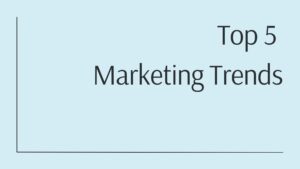Ecommerce, or electronic commerce, has reshaped the way we buy and sell products, services, and digital goods. From small local shops to massive multinational companies, the world of ecommerce is vast, diverse, and constantly evolving. Whether you’re thinking about starting your own online business or are already in the game and looking to refine your approach, one thing’s for certain: the business model you choose will have a profound impact on the trajectory of your ecommerce venture.
In this article, we’re going to take a deep dive into the various ecommerce business models that exist today, exploring the most popular ones, their benefits, challenges, and how you can leverage them to build a thriving online store.
What is Ecommerce?
Before we dive into the different ecommerce business models, let’s first define what ecommerce is. Ecommerce refers to any commercial transaction that takes place online. Whether you’re buying or selling products, services, or digital goods, if the transaction happens over the internet, it’s considered ecommerce.
Ecommerce can be broken down into various categories based on who the buyer and seller are. These categories help define the nature of the transaction and provide clarity on the type of products or services being exchanged.
The Four Main Categories of Ecommerce Business Models
When it comes to ecommerce, businesses generally fall into four broad categories:
- Business-to-Consumer (B2C)
- Business-to-Business (B2B)
- Customer-to-Business (C2B)
- Customer-to-Customer (C2C)
Let’s break down these categories further:
- Business-to-Consumer (B2C): This is the most common form of ecommerce and is the one most people think of when they picture an online store. In B2C, businesses sell products or services directly to consumers. This could be anything from an online clothing store to a digital download platform. B2C businesses often use websites or apps to facilitate transactions, and the process is generally straightforward, with customers browsing products, making purchases, and receiving them either physically or digitally.
- Business-to-Business (B2B): B2B refers to transactions between businesses, such as a wholesaler selling products to retailers or manufacturers supplying raw materials to other companies. B2B ecommerce is typically more complex than B2C, involving larger transactions, more customized pricing, and potentially longer sales cycles. B2B businesses often deal with large quantities of goods and rely on efficient ecommerce platforms to manage orders, inventory, and customer relationships.
- Customer-to-Business (C2B): In this model, individuals offer goods or services to businesses. A prime example is freelance platforms like Upwork, where individuals (the customers) offer their skills to businesses looking to hire. C2B is less common but offers exciting opportunities for businesses to tap into a wide pool of freelancers or other services.
- Customer-to-Customer (C2C): This model involves transactions between consumers, often facilitated by third-party platforms. Think of websites like eBay, Craigslist, or Facebook Marketplace, those are the best examples for C2C, where individuals buy and sell products to one another. C2C ecommerce can take on various forms, such as auction-based selling or peer-to-peer marketplaces, where users interact directly to negotiate prices and complete sales.
The Importance of Choosing the Right Ecommerce Business Model
Selecting the right ecommerce business model is one of the most important decisions you’ll make when starting an online store. The model you choose will impact many elements of your business, including your product sourcing strategy, customer interactions, marketing approach, and even your platform choice.
Here are some things to consider:
- Product Type: Will you be selling physical products, digital goods, or services?
- Investment: What is your budget? Some models require more capital upfront, while others have lower initial costs.
- Target Audience: Are you targeting individual consumers, other businesses, or both?
- Scalability: Does the business model allow for growth as your business expands?
Now, let’s dive into four of the most popular and effective ecommerce business models that can help you build your online store.
1. Dropshipping Ecommerce Model
Dropshipping is one of the most popular and accessible ecommerce business models. The core idea behind dropshipping is that you, the store owner, sell products to customers without holding any inventory. When a customer places an order, you purchase the item from a third-party supplier who ships it directly to the customer on your behalf.
Benefits of Dropshipping:
- Low Startup Costs: Since you don’t need to purchase inventory upfront, dropshipping is an attractive option for entrepreneurs with limited capital.
- Minimal Risk: With no need to invest heavily in products or warehouse space, the financial risk is lower compared to other ecommerce models.
- Scalability: Because you don’t have to worry about inventory management or fulfillment, scaling your business is easier as you gain more customers.
Challenges of Dropshipping:
- Lower Profit Margins: While you don’t have the costs associated with holding inventory, your profit margins can be lower compared to buying products in bulk and reselling them.
- Less Control Over Shipping: Since you rely on third-party suppliers to fulfill orders, there’s a risk of delays or quality issues.
- Intense Competition: Because of the low barrier to entry, dropshipping businesses often face intense competition, especially in popular product niches.
How to Get Started with Dropshipping: To start a dropshipping business, you’ll need to choose a platform (Shopify, WooCommerce, BigCommerce), aka the ecommerce website builders, find reliable suppliers, set up an online store, and start marketing your products.
2. Wholesale and Retail Ecommerce Model
The Wholesale and Retail E-commerce Model is a more traditional ecommerce model in which a store owner buys products in bulk from wholesalers or manufacturers and sells them at a higher price to customers. The key difference between wholesale and retail is the volume of sales—wholesale typically involves larger quantities, while retail targets individual customers.
Benefits of Wholesale and Retail Ecommerce:
- Higher Profit Margins: By purchasing in bulk, you can benefit from economies of scale and offer products at a higher markup, leading to more substantial profit margins.
- Inventory Control: Unlike dropshipping, you maintain control over your inventory, which can be an advantage in terms of quality assurance and product availability.
- Branding Opportunities: When you have inventory on hand, you have more control over branding, packaging, and customer experience.
Challenges of Wholesale and Retail Ecommerce:
- High Initial Investment: Purchasing inventory upfront can be expensive, and managing inventory can lead to cash flow issues if sales don’t meet expectations.
- Storage and Shipping: You need to have a storage solution (warehouse or storage space) and a system to manage packaging and shipping, which can be costly and time-consuming.
How to Get Started with Wholesale and Retail: To succeed in wholesale and retail ecommerce, you’ll need to choose a niche, find reliable suppliers, manage your inventory, set up an ecommerce platform, and develop an efficient logistics system to handle shipping.
3. Subscription-Based Ecommerce Model
Subscription-Based Ecommerce Model allows customers to sign up for recurring deliveries of products or access to digital services. This model is popular in industries such as entertainment (Netflix), food (meal kits), health and beauty (monthly beauty boxes), and software (SaaS products).
Benefits of Subscription-Based Ecommerce:
- Predictable Revenue: With recurring payments, businesses can enjoy predictable and stable revenue streams.
- Customer Retention: Subscriptions foster long-term customer relationships, as they are more likely to return for future payments than one-time buyers.
- Less Inventory Management: For many subscription businesses, inventory management is relatively simple, especially if you’re offering digital products.
Challenges of Subscription-Based Ecommerce:
- Customer Acquisition: Building a subscriber base can be challenging, as you’ll need to create compelling offers and engage in constant marketing to attract new customers.
- Churn Rate: Subscription businesses need to be mindful of churn (the rate at which customers cancel their subscriptions), which can impact long-term profitability.
How to Get Started with a Subscription-Based Business: To launch a subscription-based ecommerce store, you’ll need to focus on building a strong value proposition, automating billing and delivery, and creating an effective customer retention strategy.
4. Multi-Channel Selling Ecommerce Model
Multi-channel selling involves listing and selling your products across multiple platforms, such as your own ecommerce website, Amazon, eBay, Etsy, and social media marketplaces. This model allows you to reach a broader audience and increase your sales by tapping into diverse customer segments.
Benefits of Multi-Channel Selling:
- Wider Reach: By using multiple platforms, you can increase visibility and reach different types of customers who may not have found you otherwise.
- Flexibility: Multi-channel selling allows you to diversify your revenue streams, so if one platform sees a drop in sales, others can help offset that loss.
- Brand Exposure: Selling on large platforms like Amazon or eBay provides instant brand recognition.
Challenges of Multi-Channel Selling:
- Managing Multiple Platforms: Juggling inventory, pricing, and fulfillment across multiple platforms can be complex and time-consuming.
- Fees: Selling on third-party marketplaces often comes with fees, such as commissions or listing fees, which can eat into your profit margins.
How to Get Started with Multi-Channel Selling: To succeed in multi-channel selling, you’ll need to integrate your ecommerce platform with the various marketplaces you want to sell on. You should also ensure that your order and inventory management systems are synchronized across all platforms.
Conclusion
As you can see, there are several ecommerce business models to choose from, each with its own set of advantages and challenges. Whether you opt for the low-risk, hands-off approach of dropshipping, the higher-investment wholesale and retail model, the recurring revenue of subscriptions, or the broad reach of multi-channel selling, understanding each model will help you make an informed decision.
No matter which model you choose, remember that building a successful online store involves more than just selecting the right business model. It requires attention to product selection, pricing strategies, customer service, and ecommerce marketing efforts. By aligning your business strategy with the right ecommerce model, you’ll be setting yourself up for long-term success in the fast-paced and ever-evolving world of ecommerce.






1 thought on “4 Best Ecommerce Business Models for Starting an Online Store”
Your articles are always so detailed and easy to follow. This one is no exception! Thanks for sharing.